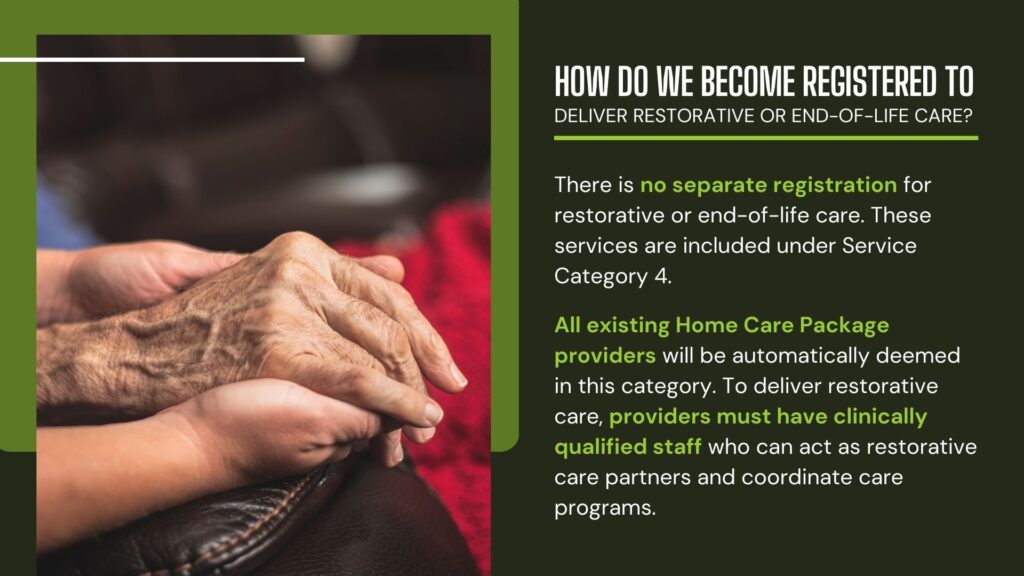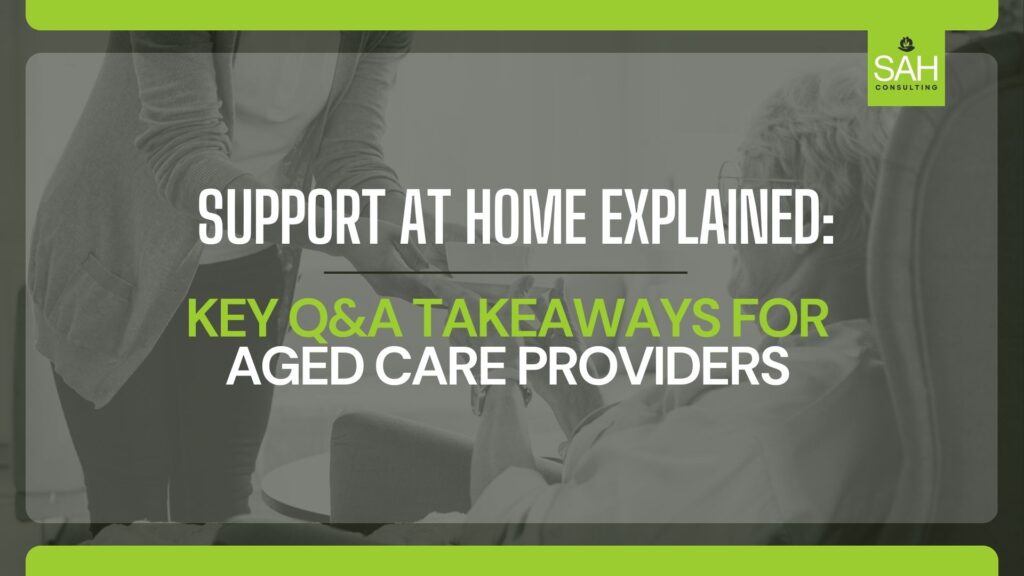The Support at Home Program is a major part of Australia’s broader aged care reform, set to begin in July 2025. It aims to streamline in-home aged care services under a single, more flexible model.
In a recent Aged Care Reform Webinar, representatives from the Department of Health and Aged Care—Nick Morgan (Support at Home Reform Branch), Susan Trainor (Funding Operations and Analysis Branch), and Lezah Rushton (Assessment and Home Care Transition Branch)—answered key questions about the program.
This blog breaks down the most important points from the Support at Home Q&A for aged care providers, so you don’t need to go through the full transcript.
Will the New Consumer Contribution Levels Start in July 2025?
No. The new consumer contribution arrangements will not begin on 1 July 2025. They are linked to the Support at Home program 2025, but these changes will not apply to Commonwealth Home Support Programme (CHSP) clients until at least July 2027.
Until then, current contribution policies remain in place. Any changes before July 2027 would require further government decisions.
What If Clients Refuse to Pay Their Income-Tested Care Fee?
Some clients may refuse to pay their co-contribution. Under Support at Home, providers are expected to collect co-contributions for non-clinical services.
Hardship provisions will be available for clients who cannot afford to pay. Further policy details are still being developed to guide how providers should manage refusal to pay.
Is Travel Between Clients Included in the Service Fee?
Yes. The Independent Health and Aged Care Pricing Authority (IHACPA) includes travel, administration, and related costs in its pricing advice for services under the Support at Home model.
In addition, thin market grants will be available to help providers in rural and remote areas manage higher travel expenses.
How Do We Become Registered to Deliver Restorative or End-of-Life Care?
There is no separate registration for restorative or end-of-life care. These services are included under Service Category 4.
All existing Home Care Package providers will be automatically deemed in this category. To deliver restorative care, providers must have clinically qualified staff who can act as restorative care partners and coordinate care programs.

Who Is Responsible for Sourcing Assistive Technology and Home Modifications?
Providers are responsible for sourcing, arranging, and invoicing for assistive technology and home modifications using a budgeted funding tier within the client’s package.
In some locations, such as New South Wales, equipment loan schemes will operate in partnership with state programs like EnableNSW. Under these schemes, prescribers—internal or external—will liaise with the state program to deliver and maintain the loaned equipment.
Will Existing Home Care Package Clients Be Affected by the New Contribution Rates?
No. Existing Home Care Package clients will not pay the new rates. Under the no worse off principle, they’ll continue paying no more than they do now. Clients who don’t pay an income-tested care fee will remain fee-free under Support at Home. Those who do will move to transitional rates, which will be discounted to ensure they don’t pay more than they currently do. Details will be provided in the upcoming handbook.
What Will Care Management Look Like for Non-Clinical Consumers?
Care managers for non-clinical consumers won’t need to be RNs. A team-based care model will continue, with the possibility of both clinical and non-clinical rates being developed to reflect different responsibilities. While a Cert IV is a preferred qualification for non-clinical care managers, it’s not mandatory. The aim is to ensure non-clinical case managers can continue their roles without disrupting the system.
Need Help Navigating These Changes? SAH Consulting Can Support You
SAH Consulting works with aged care providers across Australia to simplify the transition to the Support at Home Program. We explain program requirements in plain language, guide you through registration, and help you get prepared. Our team will also review your current systems to ensure they align with the upcoming reforms.
With deep knowledge of the aged care sector and practical experience, we help you move forward with confidence. If you’ve found this Support at Home Q&A for aged care providers helpful, we’re ready to support your next steps.
Final Thoughts: What Providers Should Be Doing Now
The Support at Home Program is bringing major changes, and providers need to be ready. Start reviewing the latest information, stay across government updates, and ensure your internal systems are aligned with what’s ahead.
Use resources like the Support at Home Q&A for aged care providers to understand key topics such as consumer contributions, travel costs, registration, and service delivery requirements. Revisit these Support at Home frequently asked questions regularly, as new guidance continues to emerge.
If you need expert help, SAH Consulting is here to support you. We help aged care providers navigate the transition with clarity and confidence. Contact us to get started.
